AVAC’s Global PrEP Tracker has documented cumulative PrEP initiations on a quarterly basis for nearly a decade. This graph presents the final data collected while PEPFAR was fully operational—PEPFAR support was responsible for 79% of PrEP uptake globally in the last year and reached 83% by the end of September of 2024. Data on the fourth quarter of 2024 is inaccessible since PEPFAR was taken offline in late January.
Global PrEP Uptake and PEPFAR’s Role, 2016-2024
PxWire Volume 15, Issue No. 1
In this special edition of Px Wire, AVAC is going beyond a quarterly update of biomedical HIV prevention. In this issue, we look at how the new US Administration’s attack on global health can be expected to devastate HIV prevention, including the capacity to deliver existing PrEP options, the scale up of new PrEP products, and the paralyzing impact on research and development. A PDF version of this report is also available.
From Research to Rollout: The impact of USG global health pullout
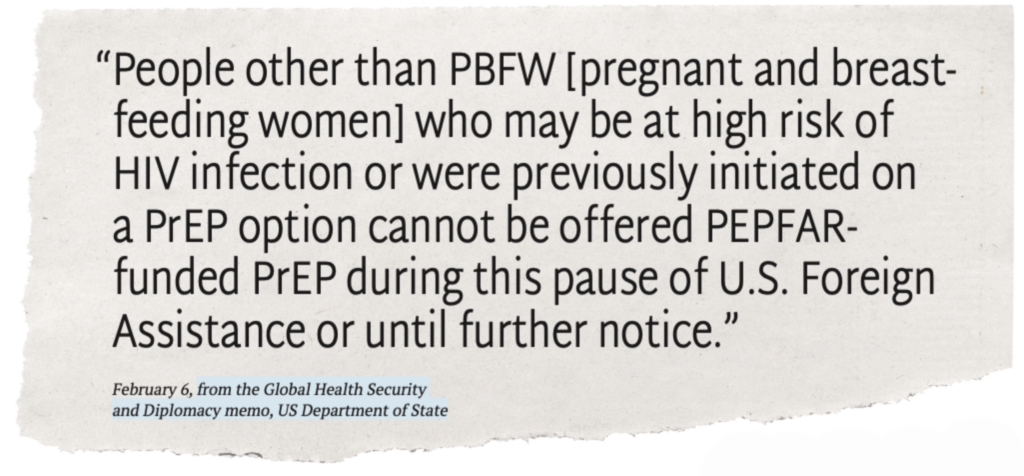
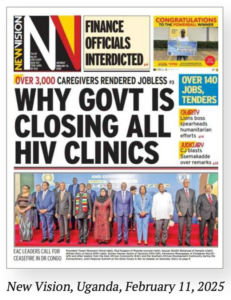
The United States’ presidential regime has launched a sustained, multi-pronged attack against foreign assistance, scientific inquiry, due process and good governance. It threatens economies, human rights, international partnerships, global health at large, and the rule of law. For HIV prevention, a single sentence, issued in a February 6 advisory from the US Department of State, has derailed the entire field, potentially setting back the HIV response by years, if not decades. Read on for resources to support your advocacy and fortify our solidarity at this critical time.
Progress in PrEP Uptake: Threatened

PEPFAR has been pivotal to accelerating PrEP uptake, significantly expanding HIV prevention coverage. The freeze on foreign aid prohibits funding to PEPFAR’s PrEP programs and poses a serious threat to global efforts to control the epidemic.
AVAC’s Global PrEP Tracker has documented cumulative PrEP initiations on a quarterly basis for nearly a decade. This graph presents the final data collected while PEPFAR was fully operational—PEPFAR support was responsible for 79% of PrEP uptake globally in the last year and reached 83% by the end of September of 2024. Data on the fourth quarter of 2024 is inaccessible since PEPFAR was taken offline in late January.
At the time of the foreign aid freeze, PrEP uptake had reached 8 million initiations since 2016, an achievement that’s taken almost 10 years to reach—too slow and too small to reach UNAIDS targets, but a robust foundation to finally accelerate PrEP uptake with next-generation PrEP. Current US policies, instead of expanding PrEP coverage, are leading to the closure of programs, and will reverse global progress against HIV.

Without primary prevention, the HIV epidemic is poised to rage on, with incidence among adults on track to triple over the next ten years. This HIV Synthesis model, developed by the HIV Modelling Consortium, estimates the impact of stopping all HIV prevention services across Africa from now through 2036—including PrEP, voluntary medical male circumcision (VMMC), and free condom distribution.
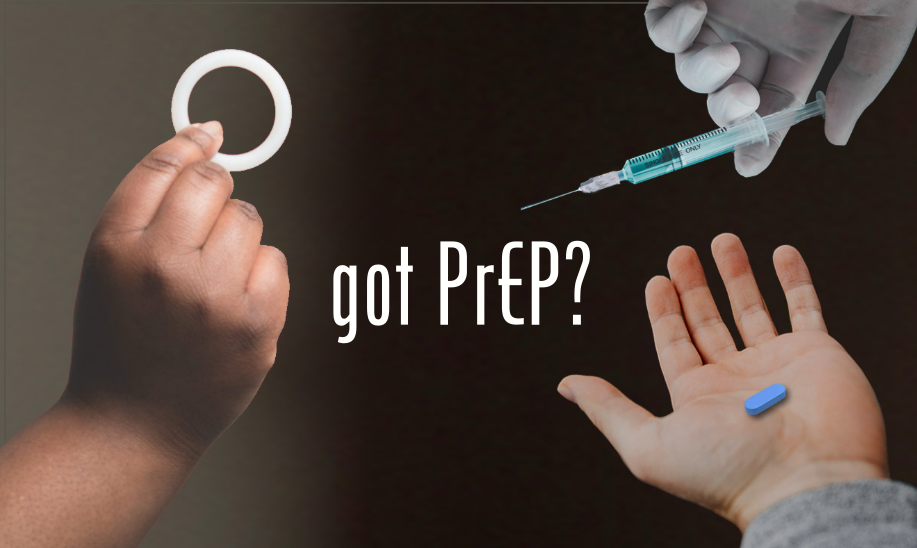
For the last 8 years, AVAC has proudly worked with PEPFAR to document PrEP uptake and its impact around the world. That stopped in January with a stop work order from the US government. But protecting access to PrEP is vital. Are you leading a PrEP program? Whether supported by PEPFAR or not, we invite you to work with us to ensure global data on PrEP is not lost. Find us at [email protected].
PrEParing for New Products: Is rollout still possible?

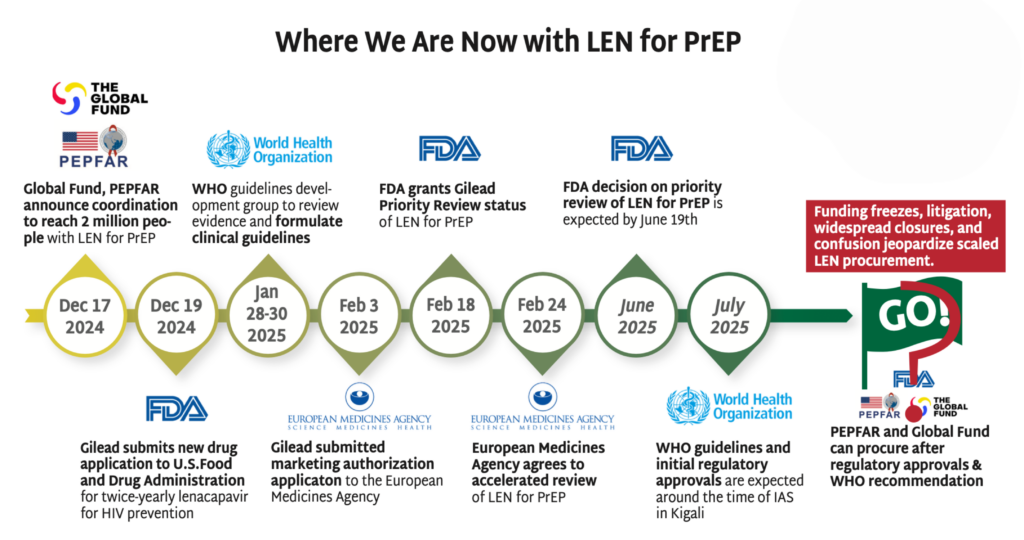
Read more in The Gears of Lenacapavir for PrEP Rollout.
The chaos in foreign assistance programs (including discontinuation of major PrEP programs), cuts in staffing and new demands on donor commitments will make decisions on the procurement of LEN for PrEP more complex and uncertain. In December 2024, the Global Fund and PEPFAR announced a plan to reach 2 million people with LEN for PrEP over three years. Exactly how funding to support this unprecedented introduction program will move forward, in the absence of significant US investment, is far from certain. The other stakeholders, including Global Fund, Gilead, CIFF and the Gates Foundation expressed commitments to the deal, but major questions remain. In the meantime:
- Gilead’s production of LEN for PrEP is continuing, as is the technology transfer to generic license holders.
- The FDA granted Gilead priority review status for LEN for PrEP, with a decision due by June 19, 2025.
- The EMA has agreed to an accelerated review of LEN for PrEP for both European access and as part of the EU-Medicines for all (EU-M4all) program, reducing the review from seven months to five months.
- The WHO’s Guideline Development Group (GDG) met in January, and WHO is expected to issue guidelines by July 2025.
The Latest R&D in the Prevention Pipeline: Supported or undermined?

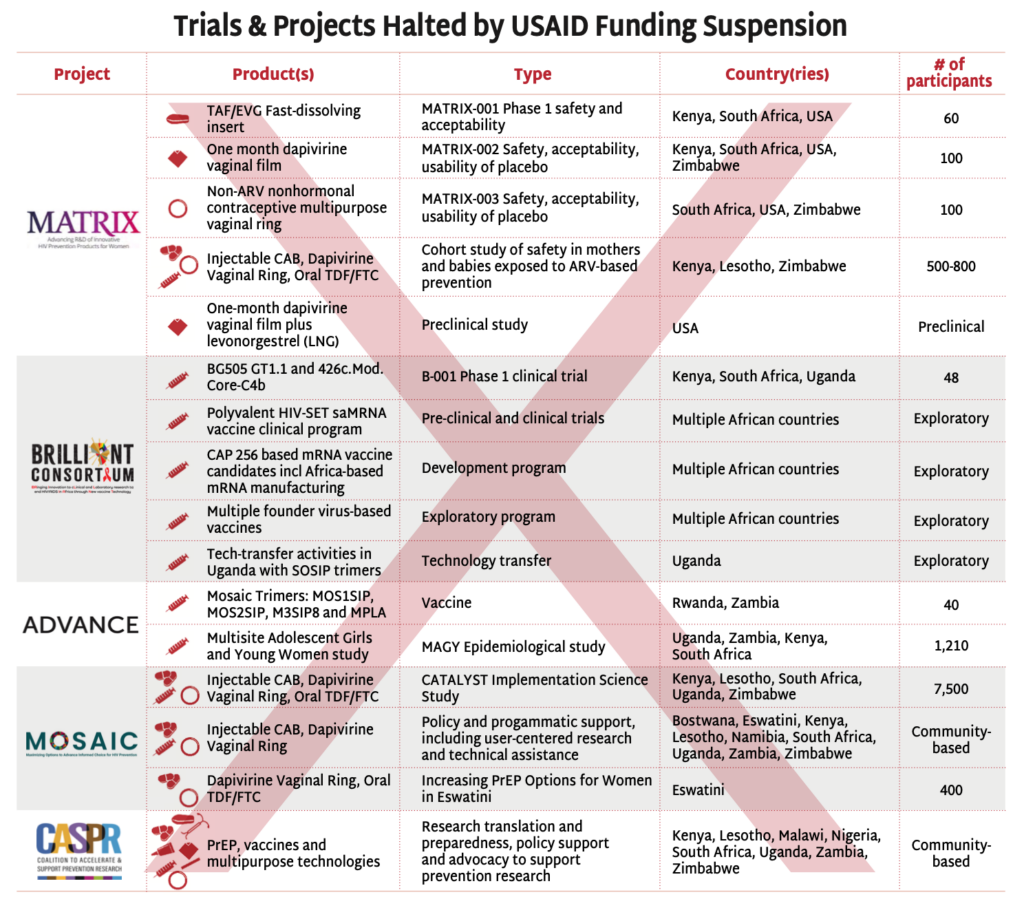
The stop-work orders have disrupted USAID-supported HIV prevention research, halting critical investigations in vaccine and next-generation PrEP strategies.
- The BRILLIANT and ADVANCE projects’ clinical, preclinical, and experimental trials testing HIV vaccine candidates have been suspended.
- The MATRIX projects’ driving innovation with next-generation PrEP and MPT products, fast-dissolving inserts and vaginal films and rings, have been forced to stop their clinical trials.
- The MOSAIC projects’ have suspended all implementation science activities, including the CATALYST study, investigating choice among oral PrEP, injectable cabotegravir and the dapivirine vaginal ring. Other implementation studies are continuing, but access to the commodities, much of which was procured by PEPFAR is questionable. See AVAC’s Integrated Study Dashboard for details.
- The Coalition to Accelerate and Support Prevention Research (CASPR) has also been paused. Led by AVAC in partnership with a number of leading African civil society organization, CASPR focuses on building an enabling environment for HIV prevention R&D. (Note: In early February, AVAC lead a lawsuit against the State Department seeking emergency relief from the freeze on foreign assistance, including funding for CASPR. The case, AVAC v. United States Department of State, is pending.)
These disruptions delay the development of urgently needed HIV interventions and threaten the sustainability of research infrastructure all over the world, with particularly egregious impacts on the research capacity of regions most impacted by the epidemic.
The abrupt suspension of these trials also raises serious ethical concerns. Stopping trials mid-course undermines trust in research, jeopardizes community engagement, and abandons participants who volunteer their bodies for scientific discovery. It will take years to build back this critical infrastructure—for HIV research and beyond—as well as the community partnership and trust needed to ensure smooth and ethical research.
Prevention Playlist
AVAC develops a wide range of resources to inform decision making and action. Check out the latest:
Join
- Subscribe to Global Health Watch: AVAC’s weekly newsletter dedicated to breaking down critical developments in US policies and their impact on global health. avac.org/signup
- Seeking Visuals and Videos: Leading groups in Washington, DC, are urgently trying to collect videos and photos documenting the impact of the US government’s foreign aid freeze, such as clinic closures despite the waiver. Non-professional phone videos and photos are welcome. Send to [email protected] for more details
- CHANGE: In response to the unfolding crisis, more than 1,300 people from civil society organizations around the world have launched CHANGE—Community Health & HIV Advocate Navigating Global Emergencies—a coalition formed to support urgent action. [email protected]
Use
- Graphic of studies of injectable cabotegravir and the dapivirine vaginal ring in eastern and southern Africa, AVAC
- Most Lifesaving Services Remain Paused: A Rapid Assessment of the PEPFAR Stop Work Order, amfAR, CHANGE, Data ETC
- What Effect are HIV Programmes Having in Africa, The HIV Modelling Consortium
- PEPFAR & Global Fund Support for HIV Programs, amfAR & Data ETC
Watch/Listen
- [LISTEN] Would PEPFAR Survive Trump—and what would it look like?
- The Impact and Implications of Recent US Government Federal Funding Reductions on Health Programmes, The Steve Biko Centre for Bioethics at The University of the Witwatersrand event recording
Read
- AVAC v United States Department of State. On February 10, 2025, AVAC and another nonprofit organization sued the new US Administration, seeking emergency relief from an Executive Order that inhumanely froze all funding for foreign assistance, AVAC
The Human Cost of PEPFAR’s PrEP Restrictions
The President’s Emergency Plan for AIDS Relief (PEPFAR) has long been hailed as one of the most successful and bipartisan efforts in global health. Established in 2003 under the Bush Administration, PEPFAR has saved millions of lives by providing critical HIV treatment and prevention services and building partnerships with countries and communities. But this work ground to halt last week, with a chilling pause on all work.
This week, the State Department approved a limited waiver to re-start some treatment and PMTCT programs is a small step forward, but far from a victory at all. And it is especially short-sighted and cruel in it approach (or lack thereof) to primary HIV prevention. One of the most effective tools in the fight against HIV has been Pre-Exposure Prophylaxis (PrEP), a medication regimen that reduces the risk of acquiring HIV by over 99% when taken consistently. Yet, with this new guidance, the Trump Administration is choosing politics over science, discrimination over compassion, and ultimately, death over life.
The February 6th guidance from the Trump Administration stating that “people other than pregnant and breastfeeding women who may be at high risk of HIV infection or were previously initiated on a PrEP option cannot be offered PEPFAR-funded PrEP during this pause of US Foreign Assistance or until further notice” is not only a dangerous deviation from sound public health policy—it is a death sentence for thousands of people at risk of HIV globally.
PrEP is one of the most powerful tools available in the fight against HIV/AIDS. Public health experts and epidemiologists agree that expanding access to PrEP is essential to curbing new infections. The administration’s directive effectively shuts the door on communities around the world, depriving them of life-saving medication and increasing the risk of new HIV transmissions. This move not only contradicts decades of scientific research but also undermines the very mission of PEPFAR: to save lives and reduce the burden of HIV/AIDS worldwide.
The restriction on PrEP access is particularly troubling in regions where the HIV epidemic is most severe, such as sub-Saharan Africa. In these areas, young women account for a disproportionate number of new infections, but so do men who have sex with men (MSM) and transgender individuals—groups that are now explicitly excluded from PEPFAR-funded PrEP under this new policy. By denying these populations access to PrEP, the administration is actively allowing the HIV epidemic to spiral further out of control.
Research has continued to produce newer modalities of PrEP that are long-acting products, which create even more possibilities for people to protect themselves for up to six months per dose. One long-acting prevention tool, injectable lenacapavir, is currently under FDA review and could provide a valuable option for people who have trouble with daily pill-taking or fear the stigma that is sometimes associated with ARVs in their communities. With regulatory approval and WHO guidelines expected by the middle of the year, injectable lenacapavir provides the best chance to drive down the number of new infections. So stopping current PrEP programs makes seizing this new opportunity that much harder.
This decision appears to be less about public health and more about an ideological agenda that seeks to police morality rather than protect lives. The new Trump Administration, just weeks into its second term is demonstrating a careless pattern of undermining global health programs, including cutting funding for international health organizations that provided comprehensive sexual health services. This latest move is yet another example of the administration prioritizing conservative politics over the well-being of vulnerable populations.
By selectively restricting PrEP access to only pregnant and breastfeeding women, the administration is effectively signaling that only certain groups are deemed “worthy” of HIV prevention. This echoes the stigmatizing rhetoric that has long plagued HIV/AIDS policy, one that associates the disease with so-called “immoral” behavior and seeks to punish those who are at highest risk. Such policies not only fail to address the reality of the HIV epidemic but also reinforce dangerous stereotypes that fuel discrimination and stigma.
The repercussions of this policy extend far beyond the immediate communities affected. As the largest funder of global HIV/AIDS programs, the United States has a moral and strategic responsibility—and opportunity—to lead with science and evidence-based solutions. The decision to restrict PrEP access will not only increase new infections but also put added strain on already overburdened healthcare systems. The cost of treating HIV is significantly higher than preventing it, making this policy both a moral and fiscal failure.
Moreover, at a time when the world is grappling with multiple global health crises, the US should be strengthening, not weakening, its commitment to international health initiatives. This policy shift undermines trust in US global health leadership and sends a dangerous message to other nations that discrimination and exclusion are acceptable public health strategies.
Congress, global health advocates, and the public must demand the immediate reversal of this harmful policy.
The fight against HIV/AIDS is far from over. We cannot afford to take steps backward when so many lives are at stake. The Trump Administration’s decision to deny PrEP to those most at risk is a dereliction of duty, a moral failing, and a betrayal of the very principles that PEPFAR was founded upon. The world is watching, and history will not judge kindly those who choose exclusion over compassion, politics over science, and death over life.
Gears of Lenacapavir for PrEP Rollout
The Gears of Lenacapavir for PrEP Rollout outlines a transformative opportunity in the global fight against HIV, coming at a pivotal moment when the scale-up of PrEP has shown remarkable progress but remains insufficient to achieve a transformational impact on HIV incidence and the trajectory of the epidemic. This effort demands a coordinated response from governments, donors, civil society, and the private sector to ensure rapid implementation, equitable access, and sustainable impact. By leveraging lessons from previous PrEP interventions, aligning financing mechanisms, and prioritizing underrepresented regions, stakeholders can overcome systemic barriers and maximize the public health potential of this innovative long-acting prevention tool.
With anticipated regulatory approvals and production scaling, the plan targets over 2.5 million LEN users in low- and middle-income countries by 2027. With a focus on addressing structural barriers like stigma, healthcare inequities, and restrictive policies, alongside integrating generics into national programs, the roadmap aims to build on existing progress while accelerating the pace of HIV prevention.
The Gears Framework for Lenacapavir for PrEP Rollout
The gears framework for lenacapavir scale-up brings together a coalition of essential stakeholders, each contributing to the successful, sustainable integration of this HIV prevention tool into global health systems.
Excerpted from the Gears of Lenacapavir for PrEP Rollout report.
Oral PrEP Prices in LMICs
This chart tracks pricing for oral PrEP as tenofovir disoproxil and emtricitabine (TDF/FTC) as compared to generic pricing in low- and middle-income countries (LMICs) since 2005.
Avac Event
I Am More Than HIV Prevention – Results from the HPTN 091 Study with Transgender Women
HPTN 091, the I Am study, evaluated the impact of a multicomponent HIV prevention strategy to increase the uptake and adherence of pre-exposure prophylaxis (PrEP) among transgender women. The strategy included HIV prevention services, gender-affirming hormone therapy, and peer health navigation.
This webinar featured Dr. Tonia Poteat, study co-investigator, who will review the study findings and discuss implications.
Speakers:
- Tonia Poteat, Ph.D., Duke University School of Nursing, Division of Healthcare in Adult Populations
This webinar featured Portuguese and Spanish translation thanks to HPTN.
Video Recording and English Audio / Spanish Audio / Portuguese Audio / Slides / Resources

Introducing the Gears of Lenacapavir Rollout and The People’s Research Agenda
This World AIDS Day, the HIV/AIDS response stands at a crossroads, with injectable lenacapavir set to transform HIV prevention. But as the new UNAIDS report highlights, it also comes at the same time as restrictive policies, economic instability, and geopolitical challenges threaten to frustrate access and rollback so much of the progress that has been achieved over the past two decades.
AVAC’s 2025 advocacy agenda prioritizes collaboration and strategies for equitable and accelerated product introduction that maximize the public health potential of new prevention options and simultaneously sustains investment in critical research and development. AVAC’s newest publication, The Gears of Lenacapavir for PrEP Rollout, provides a clear pathway for the speed, scale and equity needed to translate exciting science into public health impact, while our recent The People’s Research Agenda (PRA) meets this high-stakes moment for HIV prevention with a clear, concise and collaboratively developed set of priorities for how prevention research should be conducted and what products should be developed in the future.
Despite the challenges, 2025 holds immense potential for ensuring the equitable rollout of new options and the accelerated development of a pipeline of additional options, the combination of which can help move the field closer to ending HIV/AIDS.
For the latest information on injectable lenacapavir for PrEP, be sure to join us for our webinar Tuesday, December 3. And read more below about both the Gears of LEN for PrEP Rollout and The People’s Research Agenda.
The Gears of Lenacapavir for PrEP Rollout: Driving Speed, Scale, and Equity
Lenacapavir’s rollout is not just about making a new drug available as quickly as possible; it is about ensuring that it reaches the people who need it most, as swiftly and equitably as possible. Gilead has announced its readiness to manufacture up to 10 million doses for 2026, but this potential hinges on coordinated action by governments, donors, and civil society. The roadmap outlines the essential gears driving this effort, from robust demand generation and procurement strategies to equitable distribution and community-driven implementation. Crucially, the roadmap emphasizes lessons learned from previous PrEP interventions: that availability alone is not enough. With global HIV targets still unmet and disparities persisting, this effort demands decisive action and long-term planning.
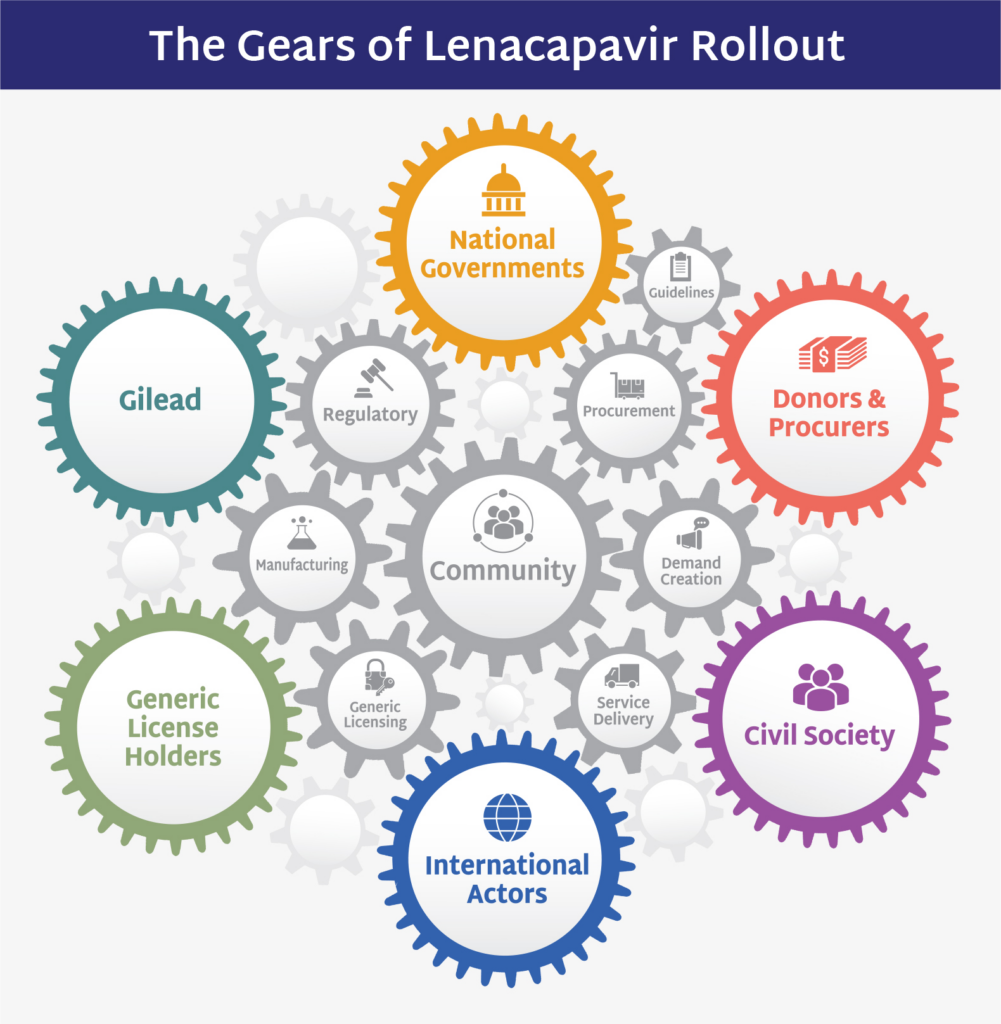
The People’s Research Agenda: A Community-Driven Vision
The People’s Research Agenda (PRA) brings the voices of affected communities to the forefront of HIV prevention research and product development. With limited resources, the stakes for decisions about which products to develop and eventually deliver become even higher for funders, communities, policy makers and governments. The PRA offers a bold vision for aligning scientific innovation with community needs. By amplifying the perspectives of those most affected by the epidemic, the PRA is a tool for driving accountability among funders, developers, and policymakers. As a living, adaptable framework, it ensures that evolving needs and challenges in the prevention landscape remain at the center of decision-making.

A Call to Action
The rollout of lenacapavir and the implementation of the PRA come at a critical moment in the global HIV/AIDS response. Achieving their full potential will require sustained collaboration, strategic investments, and unwavering commitment to equity. Together, we can transform this pivotal moment into lasting progress.
PrEP Initiations by Country Worldwide
AVAC tracks global PrEP use by conducting quarterly surveys of ongoing oral PrEP demonstration and implementation projects, and collecting data from manufacturers and government agencies. This graphic shows data on PrEP initiations around the globe. For more trends in oral PrEP uptake, visit PrEPWatch.
PrEP Initiations in Latin America, 2019-2024
Latin American countries account for 306,000 cumulative PrEP initiations in the Global PrEP Tracker as of Q2 2024, which represent 4% of the global total. Since 2019, PrEP initiations across the region continue to increase at a steady rate, with Brazil reaching about 194,000 cumulative PrEP initiations (63% of regional total) since the inception of its National PrEP Program. Read more in PxWire.